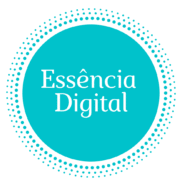In the freelance world, your words are your ambassadors. Before a client ever sees your design, your code, or your final report, they see your email. They read your proposal. They interact with your messages. In a remote-first environment, your written communication isn’t just a part of your business—it is your business.
Mastering the art of clear, professional writing is not a “soft skill”; it’s a hard-edged competitive advantage. It’s the essential tool that prevents costly misunderstandings, builds client confidence, and demonstrates your professionalism long before you deliver the final product.
This guide provides a framework for turning your written communication from a simple necessity into a powerful asset that will set you apart.
The Silent Ambassador: Why Your Writing is Your Reputation
Every email you send is a deliverable. It signals to your client how organized, professional, and competent you are. A clear, well-structured message builds trust. A vague, error-filled one silently erodes it.
The business costs of unclear writing are real and significant:
- Wasted Time: Hours lost in back-and-forth emails trying to clarify ambiguous instructions.
- Scope Creep: Misunderstood requirements leading to extra work that was never quoted for.
- Damaged Credibility: A loss of client confidence that can impact future projects and referrals.
- Frustration: On both sides, leading to a strained and unpleasant working relationship.
In short, clear writing is not an administrative task; it’s a form of risk management and a cornerstone of client retention.
The “One-Sentence Mission”: Define Your Purpose Before You Type
The most common reason for confusing writing is a lack of a clear goal. Before you type a single word, stop and define the entire purpose of your message in one single, actionable sentence.
This “one-sentence mission” becomes your North Star. For example:
- “My mission is to get the client to approve the final draft by Friday.”
- “My mission is to clarify the top three priorities for this week’s sprint.”
- “My mission is to confirm the call details for tomorrow’s meeting.”
This exercise forces you to be direct and ensures your main point isn’t buried. Every message you send should have a clear purpose and an obvious call to action.
Write for Clarity, Not Complexity: Reduce the Cognitive Load
Many people mistakenly believe that using complex vocabulary and long, winding sentences makes them sound more intelligent. In business communication, the opposite is true. Your goal is to make it as easy as possible for your reader to understand and act on your message. This means reducing their “cognitive load”—the mental effort required to process information.
Practical tips for simplification:
- Choose simple words over complex ones: Use “use” instead of “utilize,” “if” instead of “in the event that,” and “help” instead of “facilitate.”
- Avoid jargon and acronyms: Unless you are 100% certain your client understands the terminology, spell it out or explain it simply.
- Keep sentences short and direct: Aim for one main idea per sentence.
Clarity is a sign of confidence and respect for your reader’s time.
Architecting for the “Scanning Eye”: Structure for Readability
Research shows that people don’t read online content—they scan it, often in an “F” pattern (reading across the top, then scanning down the left side). To communicate effectively, you must architect your messages for this behavior.
Before (A dense paragraph):
“Hi Alex, I wanted to give you an update on the landing page draft. I’ve finished writing the copy and it comes in at 590 words, and I made sure to include the main call to action right after the hero section like we discussed. I also checked it against the brand guide to make sure the tone was aligned. Let me know what you think and if you have any revisions I’m free to get those done and finalize everything by this Friday.”
After (Structured for scanning):
Subject: Project Alpha: Landing Page Draft Ready for Review
Hi Alex,
Great news! The first draft of the landing page copy is complete and ready for your review.
Here’s a quick summary:
- Word Count: 590 words
- CTA Placement: Included directly after the hero section.
- Tone: Aligned with the brand style guide.
Next Steps: Please provide any feedback or revision requests by EOD Wednesday. This will allow me to deliver the final version to you by our deadline on Friday.
Thanks!
The second version is instantly more professional, easier to digest, and clearly states the required action.
The Professional Polish: Your Pre-Flight Checklist
A single typo or broken link can undermine an otherwise perfect message. Before you hit “send,” run your writing through a quick “pre-flight checklist” to ensure a professional polish.
- Grammar & Spelling Check: Use a tool like Grammarly or the built-in spell checker, but don’t rely on it completely.
- Clarity Check: Read the message from your client’s perspective. Is the purpose obvious? Is the call to action clear?
- Tone Check: Read your message out loud. Does it sound like a professional and helpful partner? Is the tone appropriate for the situation (e.g., formal for a contract, empathetic for a problem)?
- Fact Check: This is critical. Double-check all names, dates, project titles, and links to ensure they are correct.
Conclusion: Your Words Are Your Brand
In freelancing, your work may be creative, but your communication must be a science. Mastering clarity in your writing is not about becoming a literary genius; it’s about becoming an effective, reliable, and trusted business partner. It’s the skill that prevents confusion, inspires confidence, and ensures that the quality of your communication matches the quality of your work.
Your talent deserves to be understood. Start by ensuring your words are as excellent as your work.
“Setting clear expectations from the start can prevent a host of problems down the line.”

